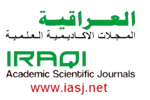Aspects of Iraqi hydrocarbon explorations: obstacles and prospects upgrading
DOI:
https://doi.org/10.59746/jfes.v1i1.17Abstract
The goal of hydrocarbon exploration is to find hydrocarbon accumulation in commercial
quantities. When studying the proven oil reserves in Iraq (150 billion barrels) and the probable oil
reserves (130 billion barrels) and a proven gas reserves (127 trillion cubic feet) and a probable gas
reserves (275) trillion cubic feet, we find that such figures put on a huge task on future exploration
requirements. The conversion of a large portion of the probable reserve into a proven reserve is a
significant support to firstly to maximize the proven reserve and secondly to further consolidate the
financial and economic situation of Iraq. The only way to do this is through a steady increase in
drilling exploration wells from (2-3) wells annually at present to (10) wells annually at the very
least, noting that the total geological structures are (530) structures, of which only (130) have been
drilled during the last decade. Therefore, the remaining (400) structures in the light of the current
rate, Iraq needs more than (133) years to cover the required drilling .If the number of drilled wells is
increased annually to (10) wells, the period will decrease to (40) years which seems a relatively
reasonable period for significant strengthening of Iraqi hydrocarbon proven reserves before the
possibility of finding alternatives to this energy in the future .This study focuses on selecting the
preferred structures to be drilled depending on the different geological parameters such as minimum
rate of risk, dimensions of structures, probable oil API and their total reserves. The study highlights
some of the preferred structures for the location of exploratory wells by determining the different
possible geological periods with high oil potential. according to tectonic division adapted by the
Exploration Oil Company The study also suggests a few structures that are expected to be future
giant reservoirs either by deeper drilling of the existing oil fields, taking into account the results of
the latest exploration drilling in neighboring countries or in the deeper reservoirs of the inverted
structures, besides revaluating some Iraq Oil Company (IPC) wells which suffer from the problem of
old methods.
References
Beydoun, Z.R., Hughes Clarks, M.W. and Stoneley, R.,1992. Petroleum in the Zagros Basin: A Late Tertiary foreland basin overprinted onto the outer edge of a vast hydrocarbon-rich Paleozoic-Mesozoic Passive-margin shelf. In Macequeea, R. and Leek, D.Eds.’: Foreland Basins and Fold Belts, American Association of Petroleum Geologists Memoir 55, 309-339. DOI: https://doi.org/10.1306/M55563C12
Geology of Iraq. Edited by Saad Z. Jassim and Jeremy C. Goff, 2006.
Habba, Y.and Abdullah, M.B., 1989.Geological study of the Hydrocarbon Source Rocks in North East Iraq. Oil and Arab
Co-operation, 15.P12-51.
Habba, Y.A. Samarria, A., Al-Jubaria, F., Georgis, N.N. and Ahmad, I.M.,1994. Exploration for the Paleozoic Prospects in
Western Iraq. Part 1 Exploration of the Paleozoic System in Western Iraq. Proceedings of the second seminar on hydrocarbon potential of deep formations in the Arab countries (OAPEC), Cairo
-13 October, (in Arabic).
Arabian Plate Sequence Stratigraphy, P.R. Sharland, Archer, D.M. Casey, Rebodies, S.H. Hall, A.P. Heward, A.D. Horbury and M.D. Simmons.Geo Arabia, Special Publication 2, Printed by Oriental Press. Manama, Bahrain, 2001.
Dunnington, H.V.,1958. Generation, Accumulation, and Dissipation of oil in Northern Iraq. In Weeks, L.G. (ed.) Habitat of Oil, AAPG, Tulsa. Oklahoma.USA. P.1194-1251.
Dunnington, H.V., 1967.Stratigraphical distribution of oil field in the Iraq-Iran-Arabian basin. Journal of Petroleum,53, (520), P.129-161.
Bishop, W.F., 1989.Petroleum geology of Iraq. Bulletin Houston Geological Society, 31-(7), (8).
Serryea, O.A., 1990.Geochimstry of organic matter and oil. Oil and Arab Co-operation,16, P.32-72. (In Arabic).
Anatomy of a world-class source rocks: Distribution and depositional model of Silurian Organic-Rich Shales in Jordan and implication for hydrocarbon potential. Sadat Kolonic, Shell International Exploration and Production. GeoArabia 2006, Middle East Conference & Exhibition, 27-29 March,2006, Manama, Bahrain.
Basin Analysis and prospectively of North West Iraq, volume 2, A Plate Tectonic model of the North Arabian Margin, A joint study by BP Exploration Company and IDEMTSU Company, London, May 1990.
Petroleum Prospectivity of North West Iraq. PB Exploration 1990.
Futyan, A.R., Jawzi, A.H. at Sedimentary basins and petroleum geology of the Middle East by Al Sharhan, A.S., Nairn, A.E.M., Elsevier
Science, B.V.,2003.
Stratigraphy, Lithofacies distribution, and petroleum potential of the Triassic strata of the Northern Arabian Plate by F.N. Sadooni
And A.S. Al Sharhan, AAPG Bulletin in V.88. No.4. (April 2004) PP.515-538. DOI: https://doi.org/10.1306/12030303067
Stonely, R., 1990. The Middle East Basin, a summary overview. In Brooks, J., (ed.) Classic petroleum provinces, Geological Society special publications ,50, P.293-298. DOI: https://doi.org/10.1144/GSL.SP.1990.050.01.15
Role of fractures in Enhancing Quality of Triassic Gas Reservoirs in Western Kuwait. Riyasat Husain1, Haiqing Wu2, Abdul Aziz Sajor1, King Hoi Lau1 ,Nadia Al-Zabout 1 , and Reyad Abu Taleb1 .1-Exploration Group ,Kuwait Oil Company.2-Chevron Texaco.2006.
Evaluating the Paleozoic Gas Potential of the Euphrates Graben, Syria.Geo2006, Middle East Conference & Exhibition, 27-29 March 2006, Manuma, Bahrain. Rene Frijhof 1, Marten Lechner1, Nada Wassouf2,Robert Pimental2, Fahed Kabbesh 2, Bahaa Mahmoud2, and Mokhles Ahmad2. 1- Al Furat Petroleum Company, 2-Syria Shell Petroleum Development, Damascus, Syria.




